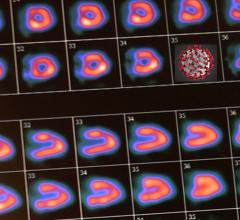
March 31, 2017 — Northwestern Memorial Hospital is now home to the Chicago area's first combined magnetic resonance (MRI) and positron emission tomography (PET) scanner. The machine shortens the total time a patient spends in imaging tests while providing exceptional image quality at lower doses of radiation.
Partnering with the Ann & Robert H. Lurie Children's Hospital of Chicago, and available to specialties throughout the Northwestern Medicine system, the Biograph mMR scanner from Siemens Healthineers, housed in the Department of Radiology in the Northwestern Memorial Hospital Arkes Pavilion, provides real-time information on anatomic structure and metabolic activity at the molecular level in the same sitting. This provides physicians with precise diagnostic data to accurately detect disease and plan treatment.
"It allows you to acquire both sets of images simultaneously, without having to move the patient to undergo two separate imaging tests," said James Carr, M.D., vice chair for research in the department of radiology and Knight Family Professor of Cardiac Imaging at Northwestern University Feinberg School of Medicine. "We are excited to offer this advanced system to Northwestern Medicine patients and to be the first in the area and among a select few medical centers in the United States to integrate this new frontier in radiology into our healthcare system."
Through an arrangement with the Feinberg School of Medicine, dedicated time on the scanner is also reserved for investigational protocols to advance molecular diagnosis and personalized medicine.
The innovative imaging system is expected to be particularly valuable in the identification of neurological and cardiac conditions, and cancer, especially in the diagnosis and treatment of prostate cancer. The lack of ionizing radiation with PET-MRI, relative to PET-CT (computed tomography), is especially beneficial to pediatric cancer patients who often undergo several rounds of imaging in the course of their diagnosis and treatment.
The Department of Psychiatry and Behavioral Sciences will also use the scanner for studies related to the diagnosis of mental health disorders and brain development in adolescents.
"The availability of molecular imaging will allow us to examine the impact of specific biological processes, such as inflammation, on brain development," said John Csernansky, M.D., chair of psychiatry at Stone Institute of Psychiatry at Northwestern Memorial and the Lizzie Gilman Professor of Psychiatry and Behavioral Sciences at Feinberg, who is leading the research. "This work will shed new light on illnesses that emerge in adolescence such as depression."
For patients who need both an MRI and PET scan, undergoing the scans on separate systems can take up to 120 minutes. Physicians using the combined scanner can acquire a precise set of images in about 45 minutes, with exceptional results because patients are less likely to move between scans.
For more information: www.usa.healthcare.siemens.com


 August 03, 2023
August 03, 2023 








